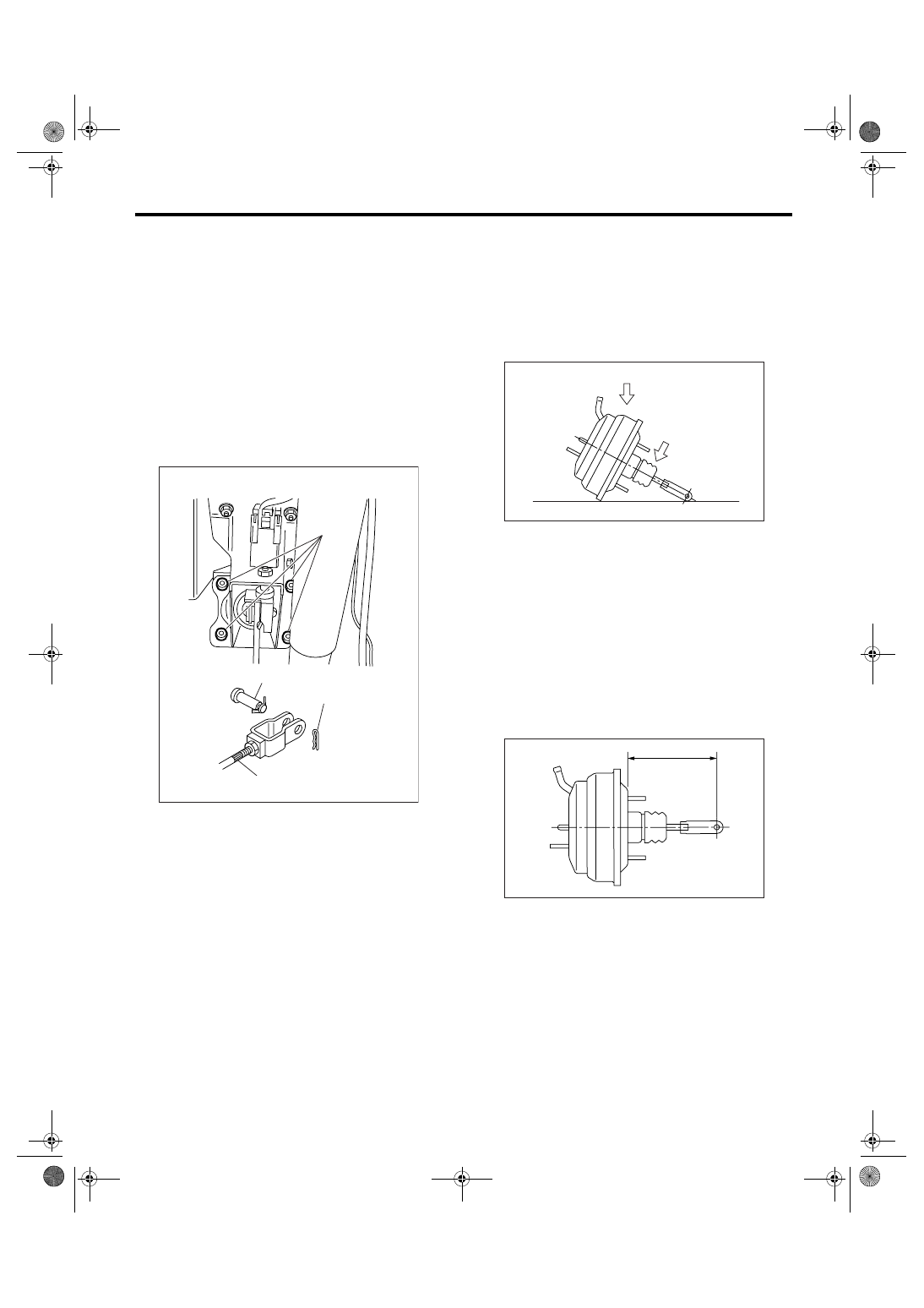Subaru Legacy (2005 year). Manual - part 826

BR-33
BRAKE
Brake Booster
9. Brake Booster
A: REMOVAL
1) Remove or disconnect the following parts at en-
gine compartment.
(1) Disconnect the connector for brake fluid lev-
el gauge.
(2) Remove the brake pipes from master cylin-
der.
(3) Remove the master cylinder installing nuts.
(4) Disconnect the vacuum hose from brake
booster.
2) Remove the following parts from pedal bracket.
(1) Snap pin and clevis pin
(2) Four brake booster installing nuts
3) Remove the brake booster while shunning brake
pipes.
NOTE:
• Do not apply strong impact to booster shell and
vacuum pipe.
• Be careful not to drop the brake booster. The
brake booster should be replaced if it has been
dropped.
• Use special care when handling the operating
rod. If excessive force is applied to operating rod,
sufficient to cause a change in the angle in excess
of
±3°, it may result in damage to the power piston
cylinder.
• Use care when placing the brake booster on the
floor.
• Do not change the push rod length.
CAUTION:
• Do not disassemble the brake booster.
• If external force is applied from above when
brake booster is placed in this position, the res-
in portion as indicated by “P” may be damaged.
B: INSTALLATION
1) Check and adjust the operating rod of brake
booster.
Specification L:
LHD
136.3 mm (5.38 in)
RHD
155.2 mm (6.11 in)
If it is not within the specification, adjust it by the
brake booster operating rod.
2) Mount the brake booster in position.
(1) Nut
(2) Clevis pin
(3) Snap pin
(4) Operating rod
(1)
(3)
(4)
(2)
BR-00073
(1) Force
(1)
P
BR-00075
L
BR-00076